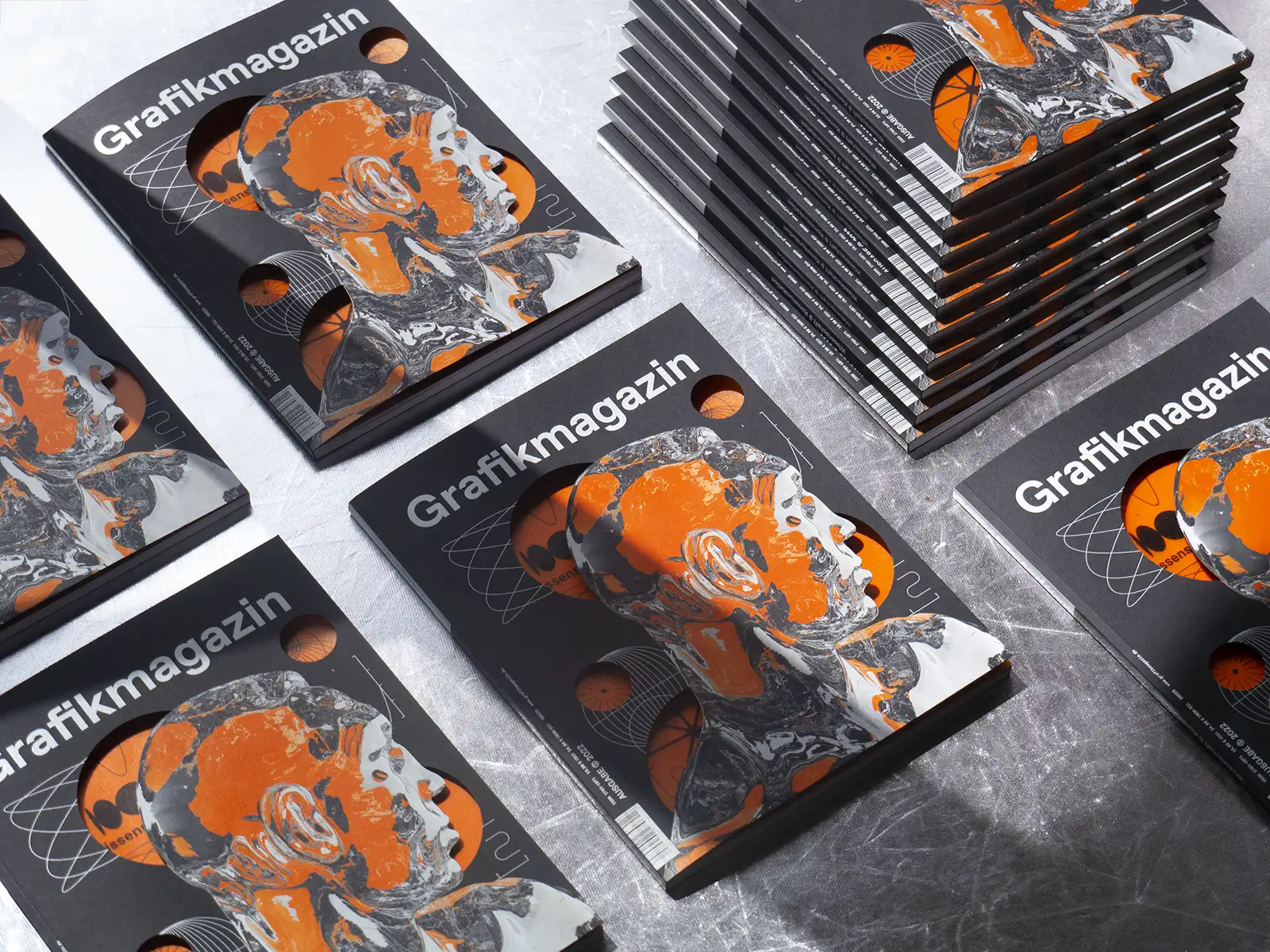Whether it's about health, climate change or new materials and technologies, scientific findings are hugely important for us as a society. But how do we find out about what is being worked out in study rooms, laboratories and workshops? And above all, how can we understand it? This is where design comes into play, as a discipline that uses visual means to make things visible and explain them. Creating transparency, providing insights, exploring new things - design and science can do this in equal measure and our cover also invites you on a creative journey of discovery.
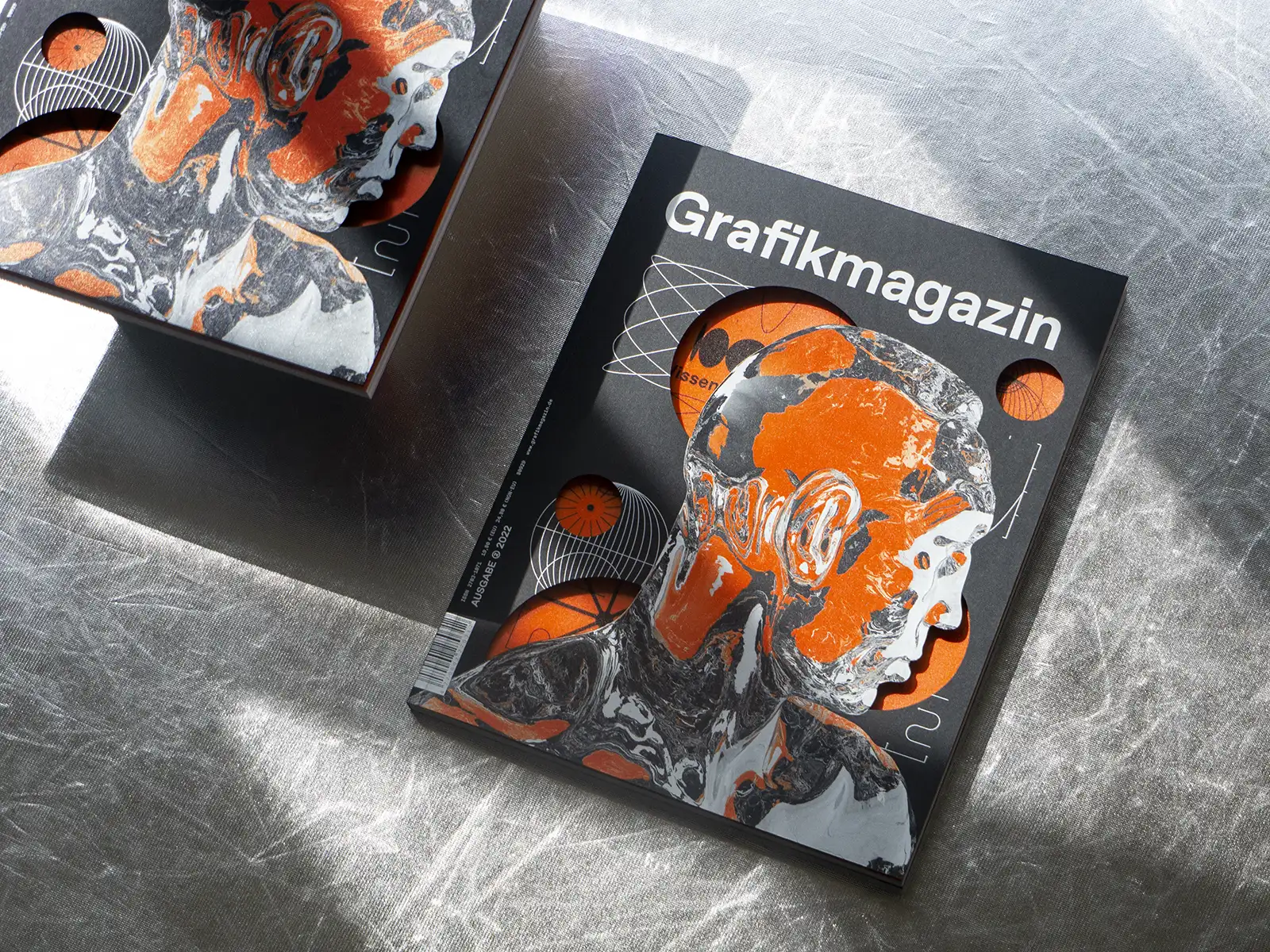
From the content
The topic of knowledge transfer is a recurring theme throughout this issue and it is always amazing how diverse the content can be conveyed. In our Design & Research section, for example, female students have knotted a carpet and are using the ancient craft technique to draw attention to the situation of women in Afghanistan. With the simple yet effective tool of context maps, a small Munich studio has succeeded in presenting even highly complex issues in a way that is easy to understand, while the project "A day in Tuhula" uses illustrations to debunk conspiracy theories.
Sylvia Lerch explains what opacity is all about in her column, where paper provides fascinating insights. We also present interesting new materials in the packaging focus, ask about the environmental compatibility of embossing foils and show ways in which different approaches can be used for sustainable design.
What the future of design could look like is shown by a Goethe-Institut project that is experimenting with artificial intelligence and asking what AI brings to graphic design and how it can be used as a useful tool.
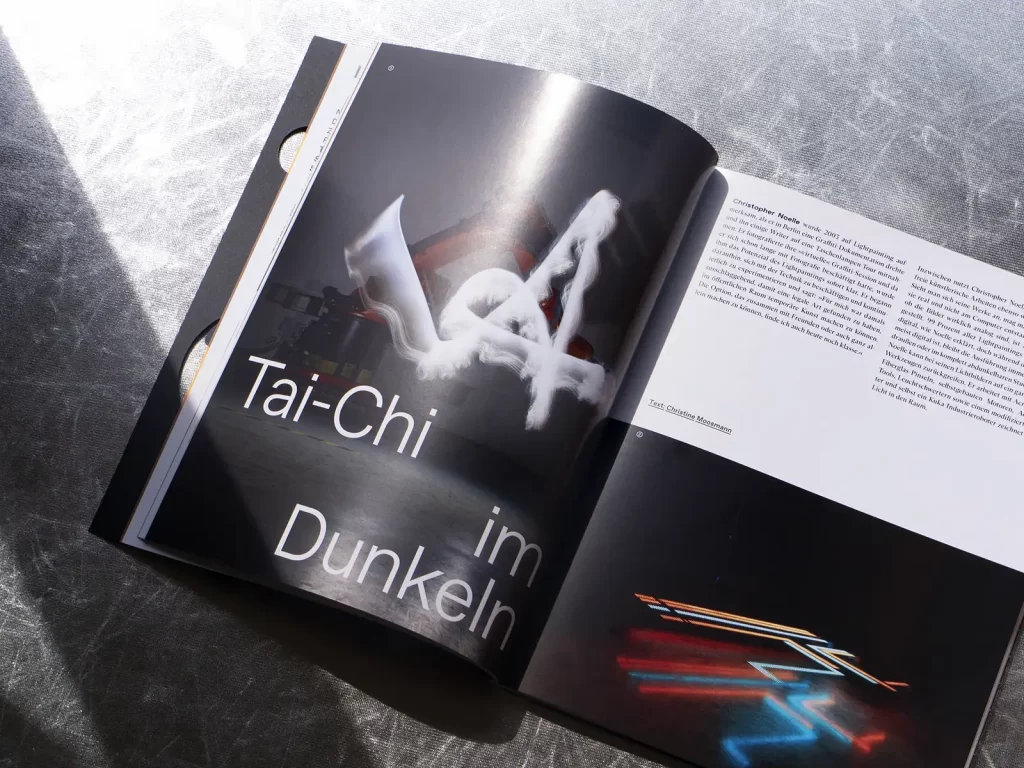
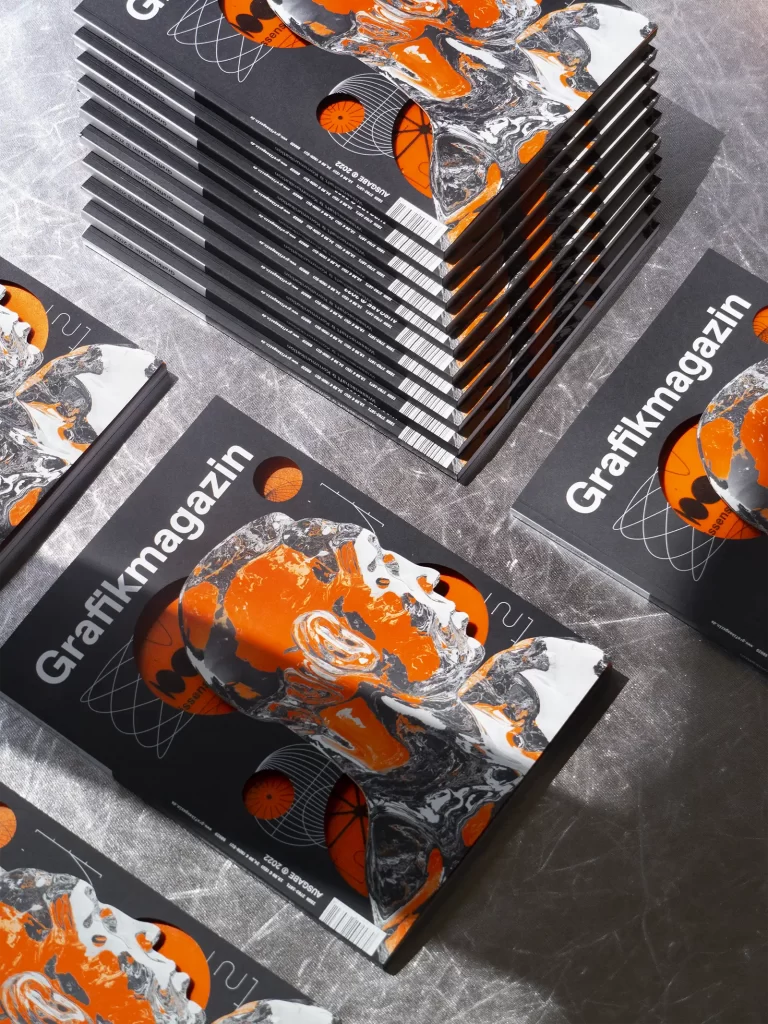
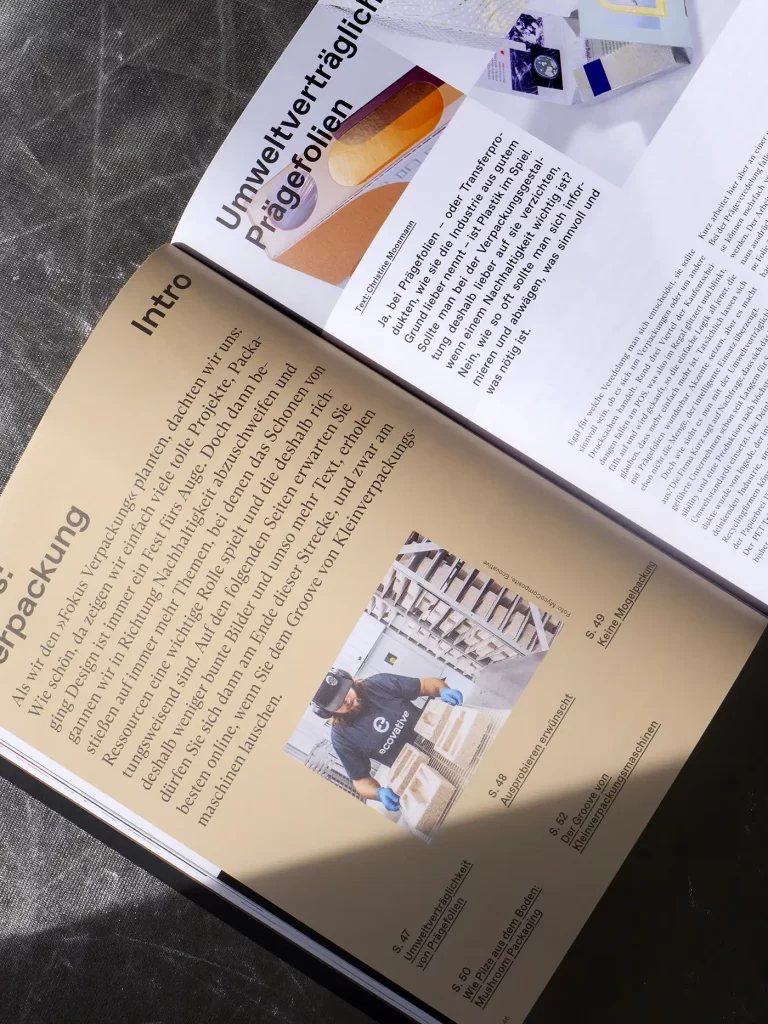

Graphics+ Science & Communication
"I see our profession as a kind of world improvement. Who else, if not us, should design the communication of difficult topics?" says Andreas Uebele in our Grafik+ on the topic of "Science & Communication". From magazines that run solely on solar energy and give tips on how to live a more environmentally friendly life, to AI robots with living cucumber plants, to venerable scientific institutions in a new guise - science is increasingly using visual means to successfully convey content, even difficult content. Design and science have more in common than you might think, or to put it in the words of Fons Hickmann: "An analytical approach is essential in design and a high degree of creativity is also required for scientific work. Both disciplines search for the new, for what we can guess but do not yet know for sure."
In our Grafik+, we explore precisely this area of tension that arises when you enter new territory both intellectually and visually.
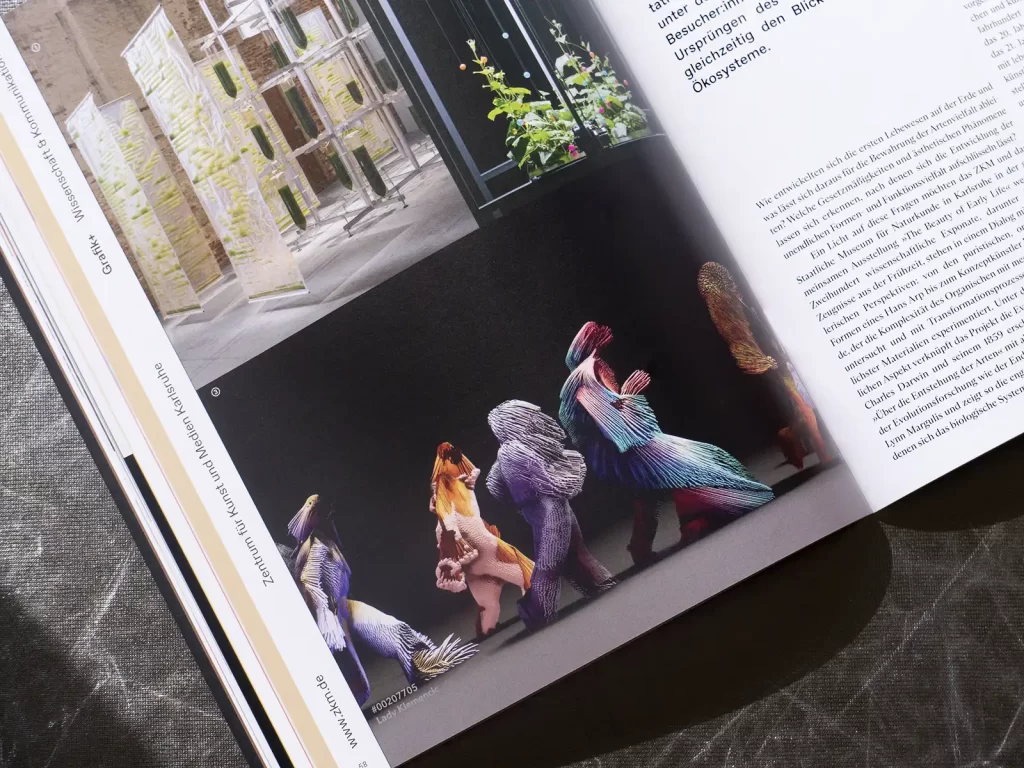
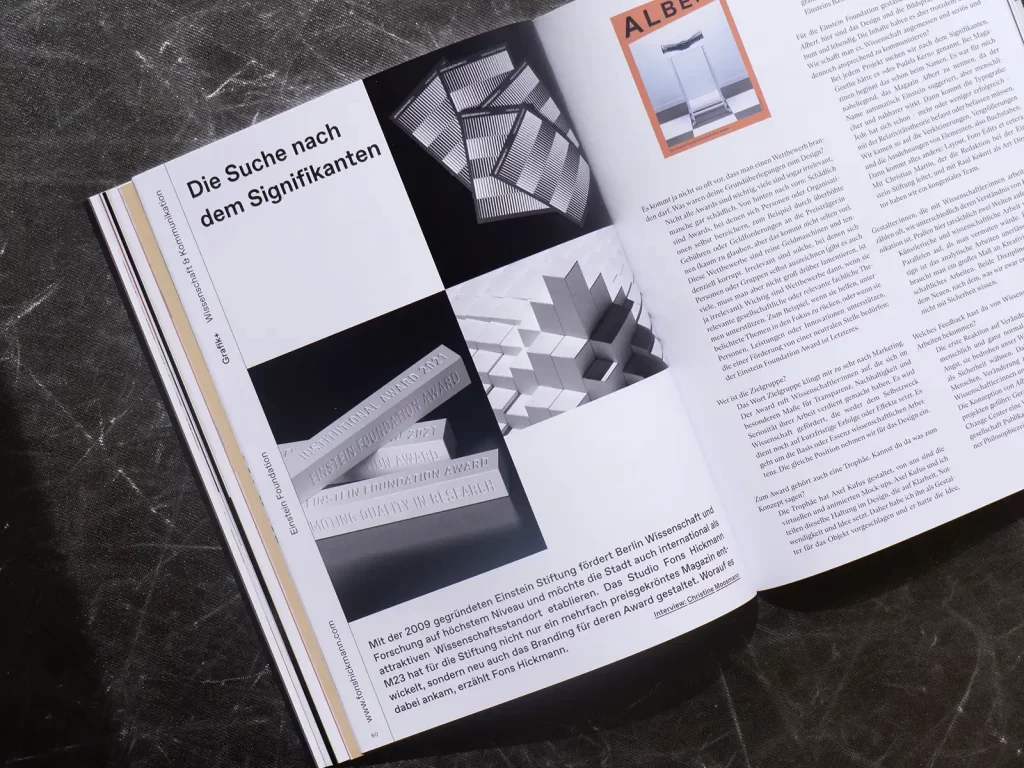
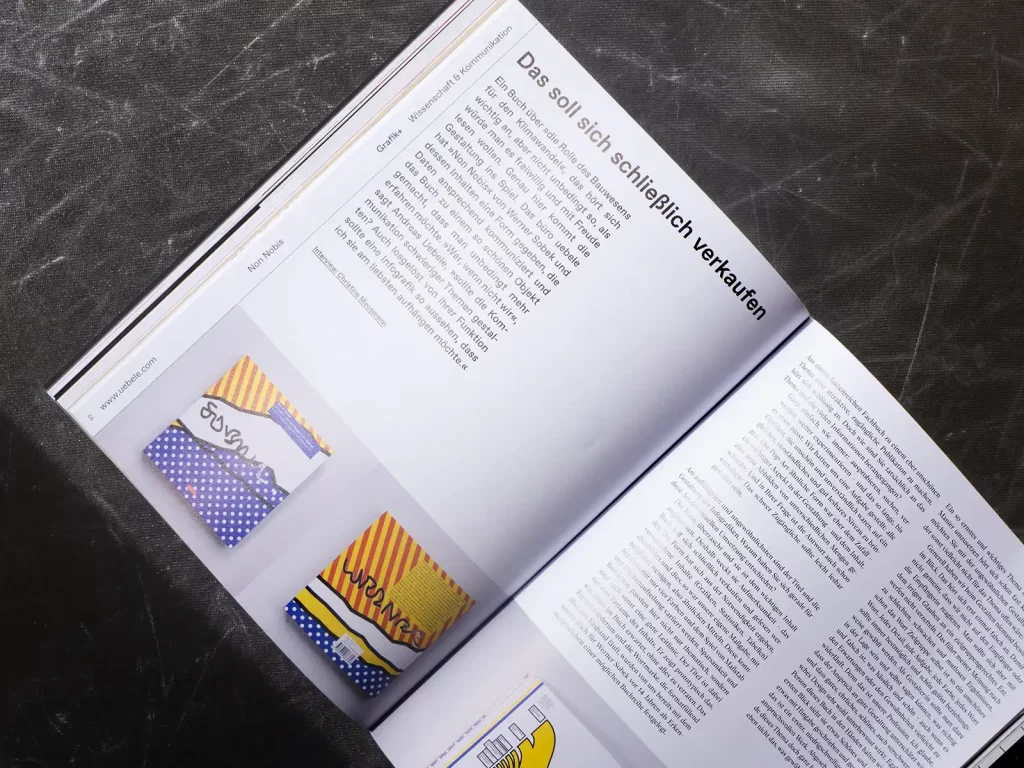
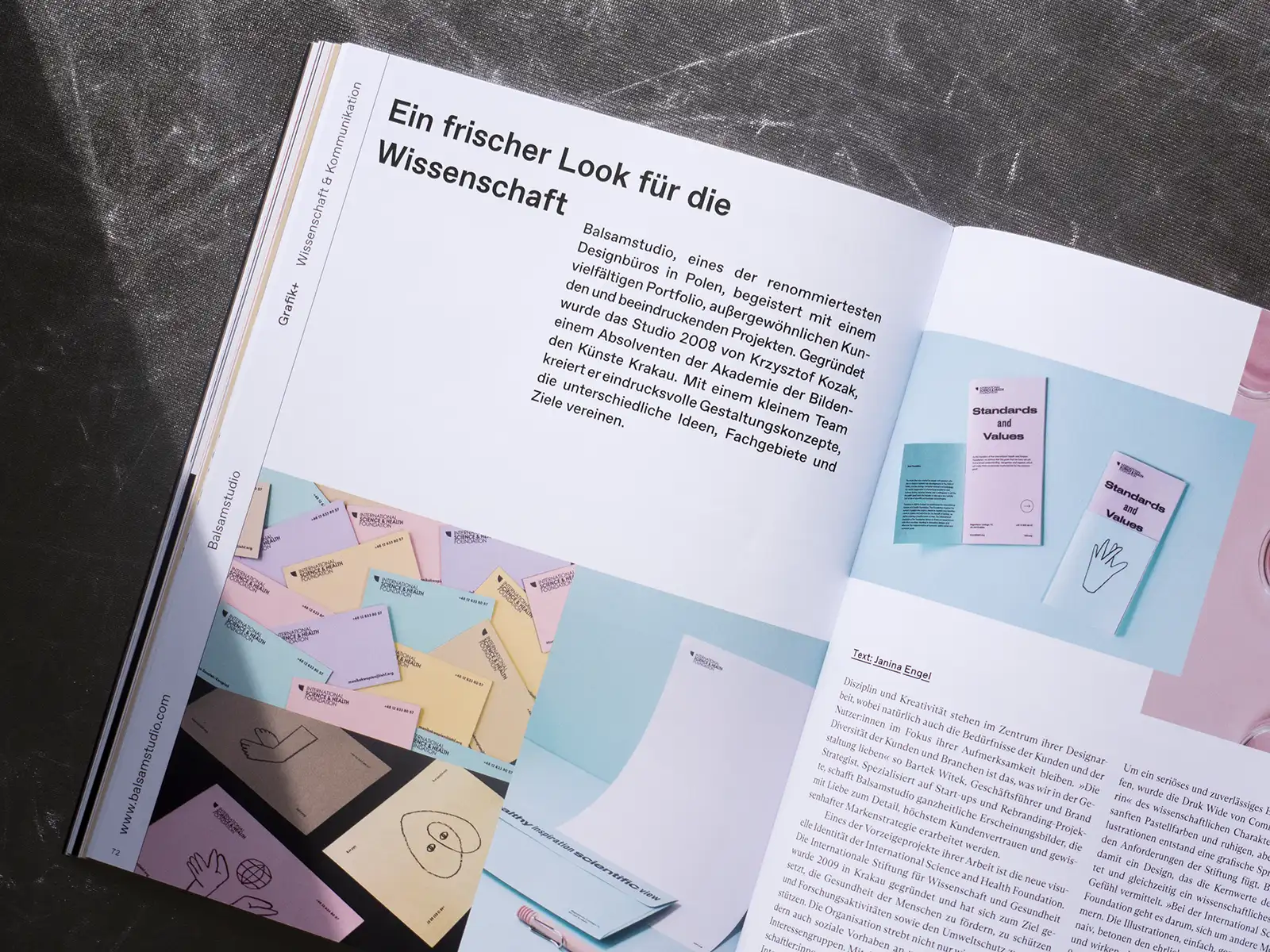
Cover & Production
Our cover is also dedicated to the process of discovery: in various ways, it plays with transparency and insights, but also with what science means in terms of content - the gradual approach to a subject, the careful penetration of a topic.
For the design, creative director Duy Anh Pham worked with the 3D scan of a sculpture, which was given its glassy appearance through a rendering. In collaboration with our Art Director Tobias Holzmann, his aim was not to use the stereotypical representation of science, but to combine old and new, analog and digital techniques.
For the elaborate implementation, we were able to win Wiesendanger medien, who printed the black paper several times in UV offset and made die-cuts to create an exciting interaction between the background and the bright color areas. The Metapaper Black paper is made entirely from factory waste and is not only deep black, it also has a very pleasant feel. The punched holes provide a clear view of the transparent paper underneath, which in turn contains a second layer of text. See, leaf through, discover new things - this cover is a perfect example of how knowledge is created.
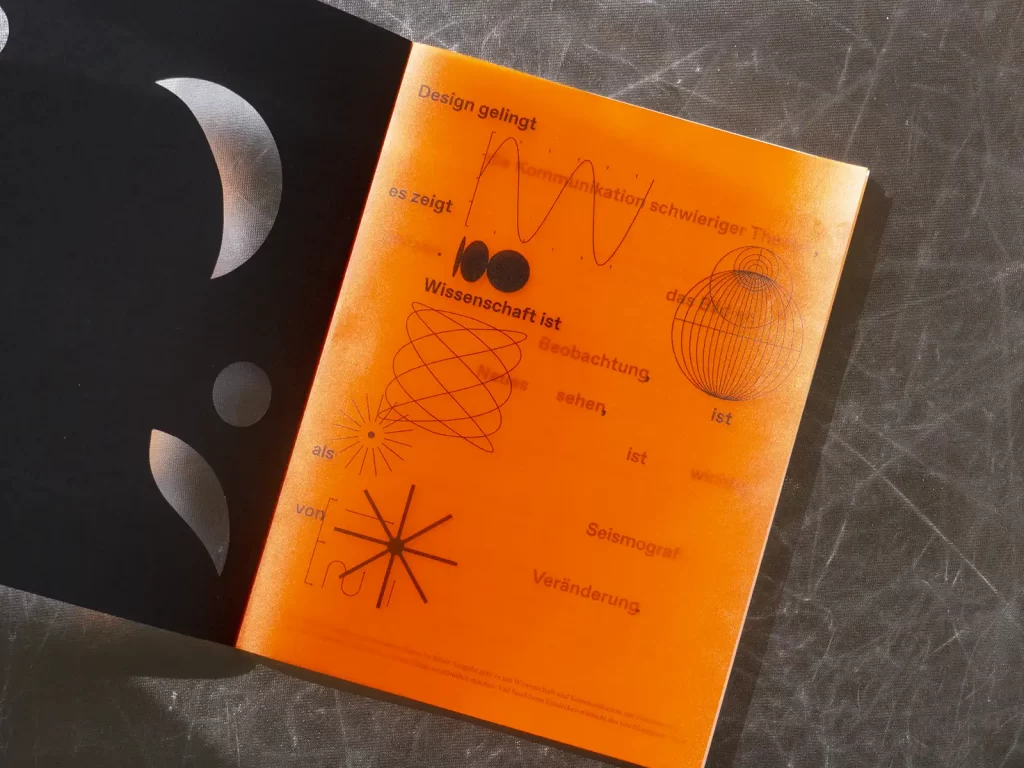
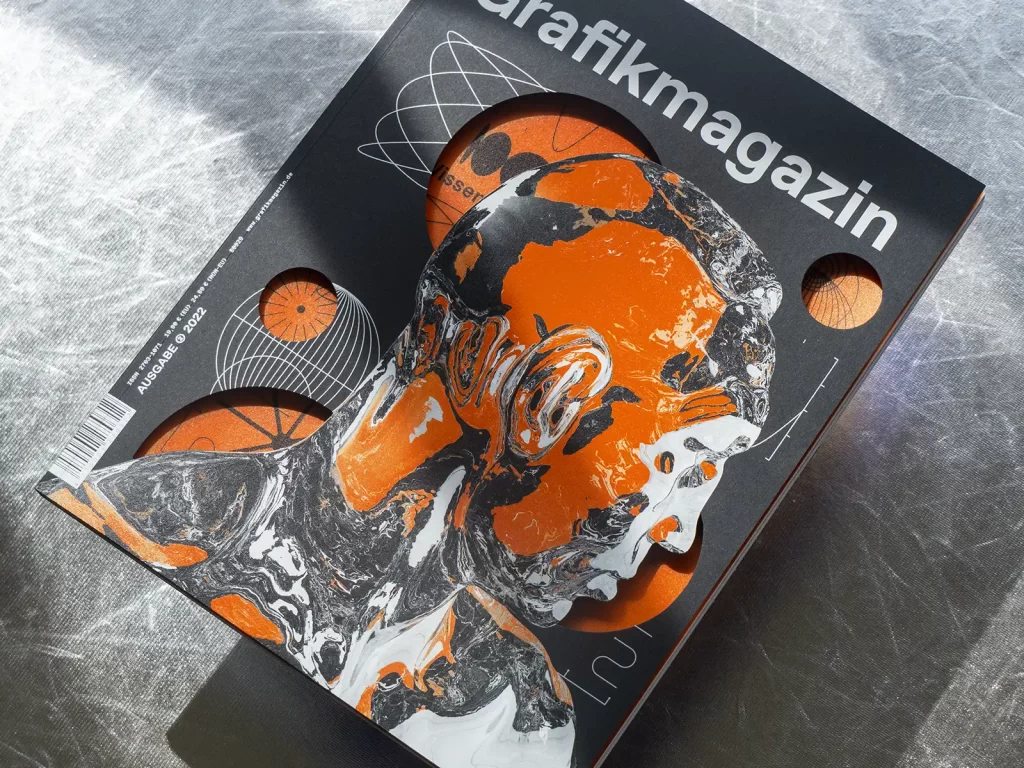
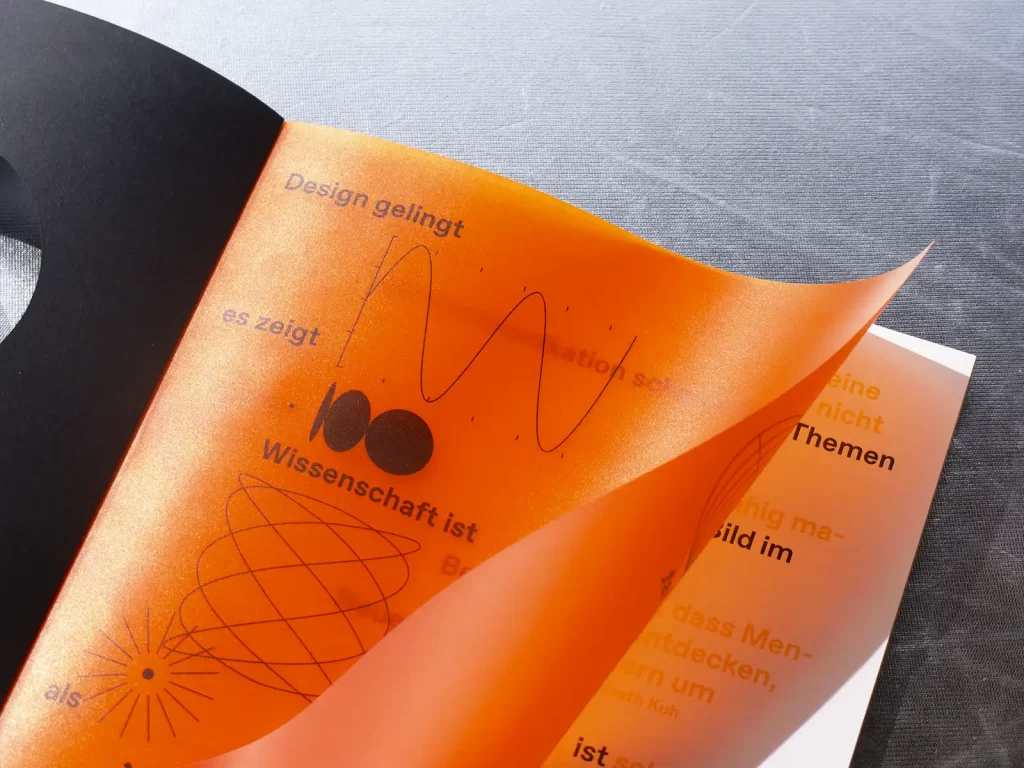
The showroom
As a Munich-based design magazine for graphic design, we can't help but dedicate an article to the legendary designer Otl Aicher on his 100th birthday - his work is still a delight today. In the showroom we also present Laurent Benner, who has put his talent at the service of Extinction Rebellion, as well as the Brazilian illustrator Lucas Wakamatsu with his love for emotional, colorful drawings. Last but not least, we would like to draw your attention to a wonderful collaboration with the creative podcast "Ohne den Hype", whose founder accompanied our editor-in-chief Christine Moosmann to the Main Valley for an interview with the screen printing couple "Print Now - Riot Later". The result is a long article about their love of print, travel and experimentation, complemented by an insightful, entertaining podcast episode.

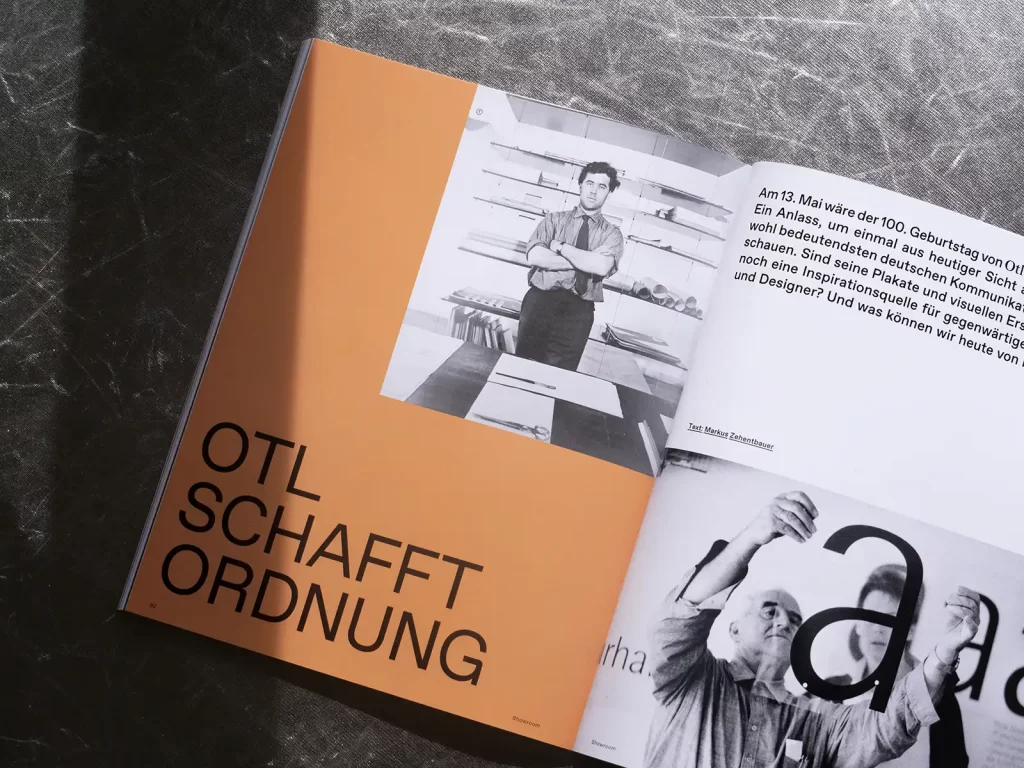
This issue really appeals to all the senses. The Grafikmagazin 02.22 with the focus on "Science & Communication" is now available in our store.
